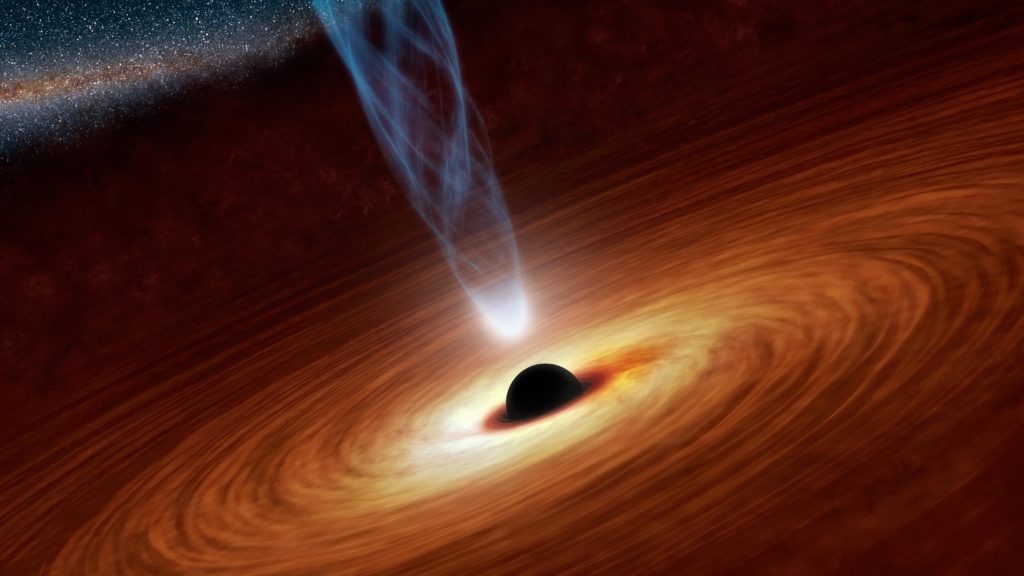If you would travel to the galactic centre of the Milky Way, you would come across a supermassive black hole (SMBH) at the location of Sagittarius A*. SMBHs are found in the centre of almost all massive galaxies. Their masses range from hundreds of thousands to ten billion solar masses.
Anything beyond that, however, is called an ultramassive black hole (UMBH). They’re the largest type of black hole, and weigh between 10 and 40 billion times the mass of the sun. These gigantic black holes seem unable to grow beyond this limit, regardless of where and when they appear in the universe.
Priyamvada Natarajan and Ezequiel Treister used existing optical and X-ray data of these UMBHs to show that, in order for those various observations to be consistent, the black holes must essentially shut off at some point in their evolution. They appear to curb their own growth, once they accumulate about 10 billion times the mass of the Sun.
One possible explanation, put forth by Natarajan, is that the black holes eventually reach the point when they radiate so much energy as they consume their surroundings that they end up interfering with the very gas supply that feeds them, which may interrupt nearby star formation.
An artist’s concept of a supermassive black hole.




